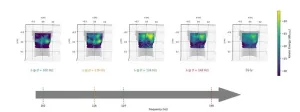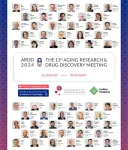“We navigated one of the most complex landscapes possible in terms of geographical, cultural and linguistic diversity and set the scene for future genetic epidemiological work,” said Liam Quinn, the paper’s first author at the University College London and University of Copenhagen.
The Fore people, who until the mid-20th century were relatively isolated from the rest of the world in the Eastern Highlands of Papua New Guinea, had a tradition of mortuary feasts, during which they ate the bodies of their deceased loved ones as an expression of respect. However, a deadly disease was spreading to the people who participated in the feasts. The illness particularly affected women and children who, as part of the mortuary rituals, consumed the infected tissue of the deceased individuals. The disease, known as kuru, led to a loss of motor coordination and balance, and then to a body tremor resulting in death. At the height of the epidemic, some villages had a significantly reduced female population.
"Out of respect for these communities, we do not use the word ‘cannibalism’ to describe this practice, but instead refer to it as mortuary feasts or anthropophagic mortuary practices,” says Simon Mead, the paper’s co-author at the UK Medical Research Council’s Prion Unit at University College London.
“It was thought that anyone who attended a mortuary feast and ate infected brain tissue would die of kuru,” says Mead. “But that was not correct. When the Papua New Guinea Institute of Medical Research (PNGIMR) field team interviewed elderly people in the affected population, it was clear that that there were people who participated in multiple mortuary feasts, but nevertheless survived.”
The kuru epidemic dwindled over decades after anthropophagic mortuary practices were outlawed in the 1950s. However, researchers remained interested in the disease, particularly in understanding how some people lived after attending these feasts.
Kuru is a type of prion disease, which includes bovine spongiform encephalopathy—commonly known as mad cow disease—and its variant Creutzfeldt-Jakob disease, which sickened humans who consumed infected cattle, particularly in the UK. Prion diseases are incurable and fatal diseases caused by a change in the shape of the body’s normal prion protein. Researchers are interested in exploring how humans can be protected from them.
Initial genetic research amongst the Fore people revealed that some of the elderly women who survived the feasts carried genetic variants in the gene that encodes prion proteins, which likely made them resistant to kuru.
“We found evidence that the Fore population was evolving to protect itself against the kuru epidemic, but this region had been ill-studied in the past, so we couldn’t make confident inferences about evolution without a deeper knowledge of the genetics of the populations involved,” Mead said.
Field staff from the affected and neighboring populations were recruited by the PNGIMR to collect genetic samples through long-term community participation, which were then analyzed with the assistance of Professor Simon Mead and colleagues in London and Copenhagen. Genetic data from 943 individuals from 68 villages, representing 21 linguistic groups in the Eastern Highlands of Papua New Guinea, were analyzed, marking the most samples ever collected from the region. This data collection was supported by in-depth ethnographic studies of the traditional mortuary rites and oral history of the kuru-affected region.
“We're looking at a degree of sampling that provides resolution in the area that hasn't been achieved before in studies. This dataset has allowed us, for the first time, to ask some questions about the origins and interrelatedness of these communities, which traditionally had no written history, and how they've been shaped through longer periods of time,” Quinn said.
The team used genome-wide genotyped data from all of the samples and compared the genomes of individuals from different villages and linguistic groups both within and beyond the Eastern Highlands. They found a strikingly high genetic distance between some linguistic groups in the region. The researchers suggested the difficult terrain, including mountains and fast-flowing rivers, may have contributed to these observations.
For example, the Anga and Fore linguistic groups were separated from one another by a fast-flowing river, but their genetic distance exceeds that observed between a population from the UK and one from Sri Lanka.
In addition, the researchers found a large influx of females migrating into the kuru-infected region over the years, challenging the notion that the kuru-infected groups became isolated from neighboring communities and excluded from the marital exchange because of their belief that the disease was caused by sorcery.
“Our findings provide evidence that supports another theory, which instead suggests that the flexible kinship systems of the Fore allowed them to intermarry with women from external communities despite fears of kuru. This likely helped the Fore to recover from the devastation caused by kuru, particularly to the female population of the Fore at the height of the epidemic,” Quinn said. Understanding these genetic distances and variations introduced by migration is crucial, the researchers said. Without these baseline data, scientists could falsely attribute genetic variants to kuru immunity when they were actually linked to these complex demographic reasons.
“This is another step in our long-term research endeavor to uncover how the Fore people and their neighbors survived kuru. It’s also an important dataset that will help us further understand human history, because our knowledge about the populations in the region was scarce,” Mead said.
###
This work is supported by the Medical Research Council, the European Research Council and the Wellcome Trust and Royal Society.
American Journal of Human Genetics, Quinn et al. “Population structure and migration in the Eastern Highlands of Papua New Guinea, a region impacted by the kuru epidemic” https://www.cell.com/ajhg/fulltext/S0002-9297(24)00043-0
The American Journal of Human Genetics (@AJHGNews), published by Cell Press for the American Society of Human Genetics, is a monthly journal that provides a record of research and review relating to heredity in humans and to the application of genetic principles in medicine and public policy, as well as in related areas of molecular and cell biology. Visit http://www.cell.com/ajhg. To receive Cell Press media alerts, contact press@cell.com.
END




